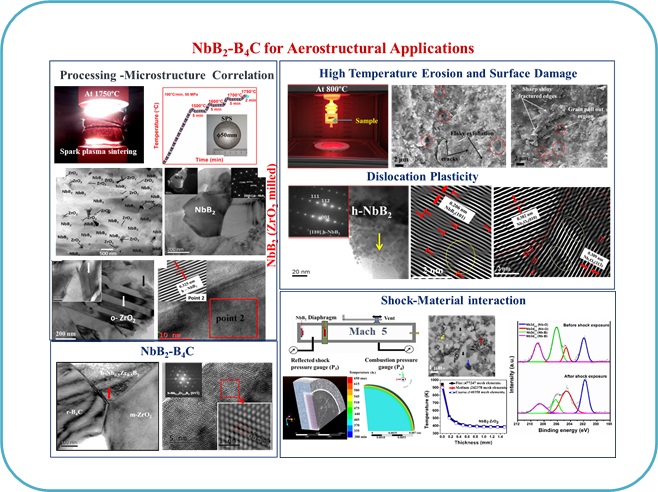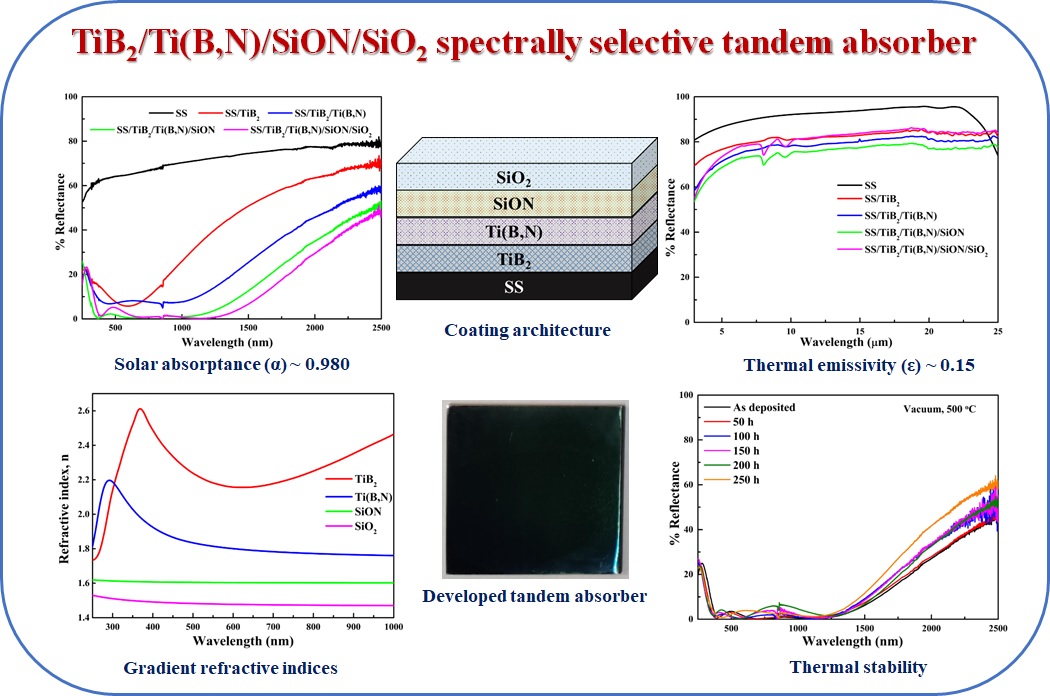Executive Summary
Professor Bikramjit Basu has made contributions at the frontiers of Engineering Ceramics, combining experimental and computational analysis (CFD, FEM) to develop materials for atomic energy, aerospace and renewable energy-related applications. In particular, Bikramjit’s research group has pioneered new multifunctional ceramics for applications ranging from human healthcare to hypersonic space vehicles to concentrated solar power. A common thread that runs through these research programs is his understanding in manipulating processing approaches (spark plasma sintering, 3D inkjet powder printing, etc.) and in combining computational analysis with performance-qualifying property measurements or prototype testing; while establishing process-structure-property linkages for a wide spectrum of oxide and non-oxide ceramics. Bikramjit’s early research postulated a critical role of dopant distribution in transformation toughness of ZrO2–based composites.
Ultrahigh temperature ceramics for aerospace applications
High speed aerospace vehicles that enter a planetary atmosphere (i.e. earth) like Space Shuttle Orbiter and hypersonic air breathing cruise vehicles require the thermal protection system (TPS) to protect the metallic airframe structure from large strains and stresses caused by intense aerodynamic heating. Novel ZrB2–SiC based multiphase ceramic composites with new sinter-aids (TiSi2 or Ti) were developed in Bikramjit’s research group; these exhibited excellent thermo-oxidative-structural stability under arcjet as well as in shock tube generated hypersonic flow conditions. Through extensive computational analysis by combining CFD and FEM, he has proposed new design and material concepts for thermal protection system of long endurance hypersonic vehicles. Looking ahead, Bikramjit’s research will have an impact on ISRO’s next generation of hypersonic space vehicles.
Transition metal borides/boron carbide for high temperature applications
High temperature nuclear reactors demand the use of boron-containing neutron absorbers with the ability to sustain extreme operating conditions of thermal cycling, stability of microstructure and retention of material properties. Through his decade-long research programs, a new manufacturing technology was established to fabricate large scale, yet mechanically reliable boride ceramics (TiB2, NbB2) and carbide (B4C) based ceramic components (e.g.12 mm to 20 mm diameter pellets and 200 mm diameter discs). Towards such development, his processing approach, i.e., multi-stage spark plasma sintering was tailored and hot pressing route was adapted. In particular, the use of new sinter-aids (MoSi2, TiSi2, Eu2O3) was identified to obtain dense borides or carbides with desired spectrum of reliable fracture toughness, strength, wear resistance and high temperature oxidation resistance. While the foundational processing-microstructure-property correlations were established in Bikramjit’s research group, the technological know-how produced in the process has helped DAE scientists in attaining large scale production of boride-based pellets for control/shut off rods in India’s next generation high temperature nuclear reactors. Superior irradiation resistance to neutron flux and post-irradiation structural stability of the transition metal borides were demonstrated using In-Pile experiments. High neutron absorption cross-section requirement was not compromised despite the tailored addition of sinter-aids. The developed borides are currently used in light water compact nuclear reactors for classified applications in India.
Spectrally selective nanostructured multilayer ceramic absorber coatings:
In India and worldwide, various photovoltaics (PV) based technologies have been implemented for solar energy harvesting applications. However, solar thermal technology has not reached its full potential. In this direction, Bikramjit’s group’s work had a major impact on the development of concentrated solar power (CSP) system as part of the world’s one of the largest renewable energy research program, Indo-US Solar Energy Research Institute (www.seriius.org). In particular, his recent work provides deep insights into the role of optical constant gradient on spectrally-selective properties (α/ε~0.96/0.08) of W/WAlN/WAlON/Al2O3 and TiB2/TiB(N)/Si3N4 solar absorber coatings for efficient renewable energy utilization. It is noteworthy to mention that the recently conducted accelerated thermal shock testing (30 cycles at 450°C) on those coatings in simulated solar field environment at Sandia National Laboratory indicate service durability of ~ 20 years.



